https://www.change.org/p/hold-the-met-police-criminally-accountable-for-the-barbaric-killing-of-two-leashed-dogs?recruiter=866225021&utm_source=share_petition&utm_medium=twitter&utm_campaign=psf_combo_share_message&utm_term=psf_combo_share_initial&recruited_by_id=98d02d00-325c-11e8-9dc2-47e142d1eb44&share_bandit_exp=message-36214178-en-GB
MARSHALL and MILLIONS lego stopmotion tribute
https://www.change.org/p/hold-the-met-police-criminally-accountable-for-the-barbaric-killing-of-two-leashed-dogs?recruiter=866225021&utm_source=share_petition&utm_medium=twitter&utm_campaign=psf_combo_share_message&utm_term=psf_combo_share_initial&recruited_by_id=98d02d00-325c-11e8-9dc2-47e142d1eb44&share_bandit_exp=message-36214178-en-GB
Fifa Lego Soccer minifigure stopmotion Qatar
Made in the year 2019 for QSL - Fifa Lego Soccer minifigure stopmotion Qatar. Featuring minifigure of BAGHDAD BOUNEDJAH QSL LEGO STOP MOTION.
The QNB Stars League is the main tournament managed by the Qatar Stars
League (QSL). The league is held every season with the participation of
12 clubs, which compete over 22 weeks for the championship.
The QSL gives much importance to the preparations, infrastructure,
operations and follow-up of all elements and associated tasks to
successfully deliver the tournament, with a goal of improving the
championship’s technical levels. This is reflected positively on the
performance of our national teams and professional football in Qatar.
The tournament receives wide media coverage locally and internationally.
All matches are broadcast live through our Host Broadcaster AL KASS
sports channel, which allocates a wide variety of programs to cover all
aspects related to the QNB Stars League.
The league is also widely covered by print media, radio, websites, and various social media platforms.
Each of the participating clubs must meet the standards of
professionalism in order to obtain licenses from the QSL to be eligible
to compete in the tournament.
Since the inception of the professional league, Qatar football has
achieved a lot at the club and country levels in Asian and regional
competitions. And the QNB Stars League has gained a prominent place
among the professional leagues in Asia.
On This Day - July 21, 1871 - Praxedes Julia Fernandez, a performer who is considered Queen of Philippine Drama, was born in Sta. Cruz, Manila
Today in Philippine History, July 21, 1871, Praxedes Julia Fernandez was born in Sta. Cruz, Manila
On July 21, 1871, Praxedes Julia Fernandez, the so-called singing sweetheart of Manila, a performer who is considered Queen of Philippine Drama, was born in Sta. Cruz, Manila. She was one of the three children of Mariano Fernandez and Josefa Quizon.
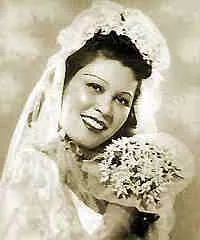
|
|
| (Praxedes Julia Fernandez on her wedding day) |
Yeyeng as she was popularly known, was one of the founders of Fersuta company, the name framed from the names of the principal lady players, Fernandez, Suzara,and Tagorona. Her group presented many benefit shows for the widows and orphans of the soldiers of the Spanish army.
On September 30, 1891, in grateful acknowledgement of Miss Fernandez's performances for charity, the Spanish army honored her with a gala affair. As a memento of the occasion, she was presented with a silver crown.
Yeyeng ended her stage career with a farewell presentation of the opera La Viuda Alegre at the Manila Grand Opera House on November 14, 1911.
On August 18, 1892, she was married to Ricardo Penalos Pastor, a professor in the Escuela de Artes y Oficios in Iloilo. Their marriage was not blessed with any children.
She died on August 22, 1919 at the age of 48.
References:
- Philippine News Agency archives
- Photo credit: http://dreamcatcherrye.blogspot.com/
On This Day - July 20, 1826 - Margarita Roxas de Ayala, one of the Philippines' greatest businesswomen, was born in San Miguel, Manila
Today in Philippine History, July 20, 1826, Margarita Roxas de Ayala was born in San Miguel, Manila
On July 20, 1826, Margarita Roxas de Ayala, one of the Philippines' greatest businesswomen, and founder of La Concordia College, was born in San Miguel, Manila.
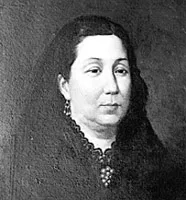
She was the eldest child of Domingo Roxas founder of Casa Roxas, and Maria Saturnina Ubaldo, a Spaniard. During her early life she suffered great indignity and injustice when her father was incarcerated three times. The Spanish colonial authorities suspected that her father was a sympathizer of the Filipino cause.
Don Domingo one of the earliest industrialists of the Philippines, was an advocate for liberal reforms. He died in prison in 1843.
Assuming control of her father's company, Margarita acquired her vast wealth as she diversified into real estate, mining, and alcohol production.
She was married to her father's partner Don Antonio de Ayala, a Spaniard from the Basque region of Alava de Ayala, Spain. Don Antonio de Ayala was one of the first directors of Banco Español-Filipino de Isabel II currently known as Bank of the Philippine Islands.
Margarita Roxas de Ayala became the foremost philanthropist of her time, donating her own summer residence called La Concordia in Santa Ana, Manila in 1868 to the Colegio de la Concordia which survives to this day as La Concordia College.
The school upon her instruction was staffed by a Spanish order of nuns, the Sisters of Charity, and dedicated to educating and giving scholarships to marginalized women.
She died on November 1, 1869 at age 43 leaving Don Antonio to run the company until his death in 1876. They had three daughters. The first daughter Carmen Roxas de Ayala would marry her cousin Don Pedro Pablo Roxas and their daughter Margarita Roxas de Ayala y Roxas would later marry Eduardo Soriano. They would become the parents of San Miguel Corporation industrialist Andres Soriano.
References:
Philippines News Agency
Photo: Wikipedia Commons
On This Day - July 19, 1969 - Ms. Gloria Diaz won Miss Universe pageant, held in Miami Beach, Florida

Ms. Gloria Diaz won Miss Universe pageant on July 19, 1969, held in Miami Beach, Florida, the same day the first man, astronaut Neil Armstrong, landed on the moon.
Díaz was 18 when she was crowned Miss Universe after outshining and outsmarting other candidates on the question on how to welcome the first men that had just landed on the moon, Neil Armstrong, Edwin Aldrin and Michael Collins, as soon as they return to planet Earth.
The final question was:
"If the man from the moon should come down to earth and visit your hometown, what would you do to entertain him?"
Gloria’s winning answer was:
"Why, I guess I would do for him what I always do. Since he has been on the moon for so long, he would want a change."
References:
Philippine News Agency archives
On This Day - July 18, 1886 - The first optometrist in the country, Federico B. Sarabia was born
Today in Philippine history, July 18, 1886, Federico B. Sarabia, the first optometrist in the country, was born in Kalibo, Aklan
On July 18, 1886, Federico B. Sarabia was born to Benigno Sarabia and Inocenta Jimenez in Kalibo, Aklan. He was the first optometrist in the country being the holder of Professional Regulatory Commission of Optometry Certificate No. 1 issued in 1905.
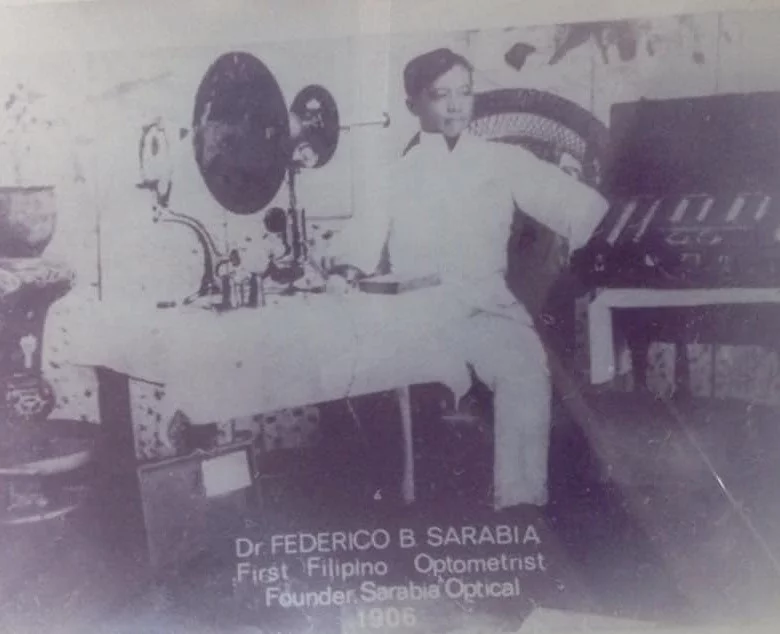
After graduating in Doctor of Optometry in 1905 from the University of Northern Illinois College of Optometry, he had a brief practice of optometry at Eye Infirmary in New York City. Then he returned to the Philippines and established a clinic in Iloilo. He would later move to Escolta and establish his clinic there, marking the first Sarabia Optical in Manila.
This became the first of his chain of 38 clinics now dotting the different cities in the entire country among them Metro Manila, Iloilo, Bacolod, Davao, Cebu, Dumaguete,Roxas and Iligan.
Sarabia Optical is the biggest and most modern optical firm in the country today.
Among his early prominent clients at the Escolta clinic were Presidents Manuel L. Quezon, Sergio Osmeña, Manuel Roxas, and Elpidio Quirino and Doña Trinidad Rizal - sister of Dr. Jose Rizal. Doña Trinidad's glasses can be found in Fort Santiago as part of the Rizal Memorabilia, and are labeled "anteojos de Federico Sarabia."
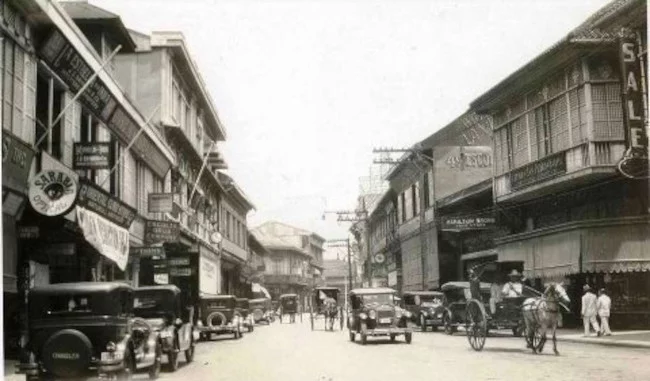
In 1928, President Quezon appointed Dr. Sarabia as Chairman of the Board of Examiners in Optometry. Dr. Sarabia also became the first President of the Philippine College of Optometry.
Aside from Sarabia Optical, Dr. Sarabia also founded Aklan Academy in Kalibo, Aklan and had organized the First National Congress of Coconut Planters in the 1930's.
Today, Sarabia Optical has grown into a trusted and recognized retail clinic operation. Although Dr. Federico Sarabia passed away on September 14, 1954, his legacy lives on. Five of his children have followed his path as eye care professionals. Four of them are optometrists and one is an ophthalmologist.
Source:
- Dr. Federico B. Sarabia, Atty. Rex S. Salvilla, News Today, July 24, 2006
- History, About Sabaria Optical, https://www.sarabiaoptical.com.ph
- Wikipedia (Tagalog)
- Phto credit: Facebook page of Vivian Sarabia Optical
On This Day - July 17, 1948 - President Quirino signed RA No. 333 making Quezon City the capital of the Philippines
Today in Philippine History, July 17, 1948, President Quirino signed RA No. 333 making Quezon City the capital of the Philippines
On July 17, 1948, President Elpidio Quirino signed Republic Act No. 333 making Quezon City the capital of the Philippines. RA 333 also redefined the Caloocan-Quezon City boundary and specified the city's area to be 156.60 square kilometers.
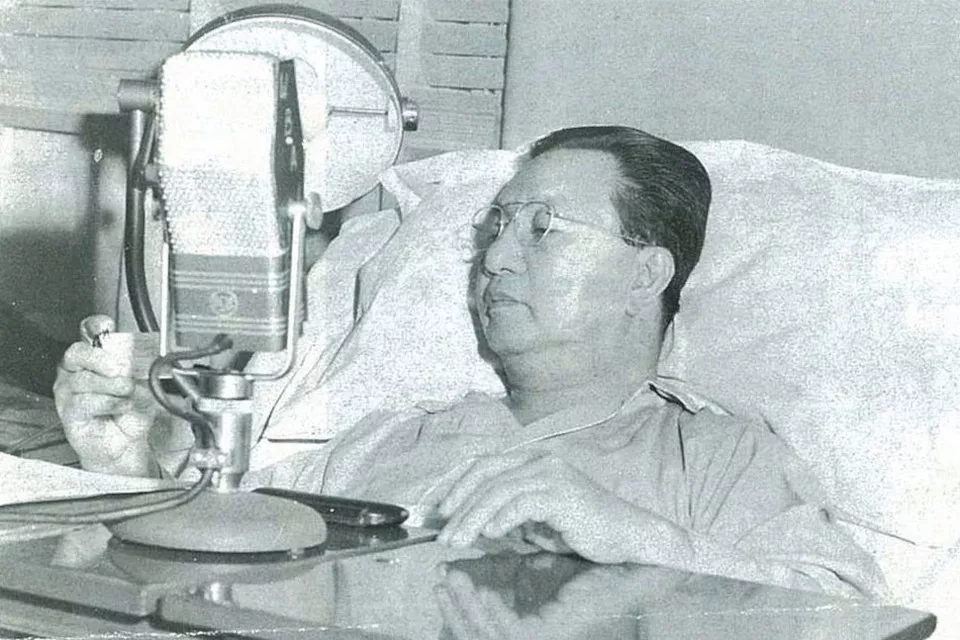
Baesa, Talipapa, San Bartolome, Pasong Tamo, Novaliches Poblacion, Banlat, Kabuyao, Pugad Lawin, Bagbag, Pasong Putik which formerly belonged to Novaliches and had an area of about 8,100 hectares, were taken from Caloocan and ceded to Quezon City.
On June 16, 1950, the Quezon City Charter was revised by Republic Act No. 537, changing the city's boundaries to an area of 153.59 square kilometers.
Exactly six years after on June 16, 1956, more revisions to the city's land area were made by Republic Act No. 1575, which defined its area as 151.06 km2 (58 sq mi).
On November 7, 1975 the promulgation of Presidential Decree No. 824 of President Ferdinand Marcos established Metro Manila. Quezon City became one of Metro Manila's 17 cities and municipalities.
On June 24, 1976, Presidential Decree No. 940 transferred the capital back to Manila.
On February 23, 1998, Republic Act. No. 8535 was signed by President Fidel V. Ramos. The Act provided for the creation of the City of Novaliches comprising the 15 northernmost barangays of Quezon city. However, in the succeeding plebiscite on October 23, 1999, an overwhelming majority of Quezon City residents rejected the secession of Novaliches.
Quezon City is the first local government in the Philippines with a computerized real estate assessment and payment system.
Reference:
Pambansang Komisyong Pangkasaysayan
On This Day - July 16, 1844 - Narciso Claveria y Zaldua, a native of Gerona of Biscayan origin, became Governor-general of the Philippines
On This Day - July 16, 1844 - Narciso Claveria y Zaldua, a native of Gerona of Biscayan origin, became Governor-general of the Philippines

|
On July 16, 1844 Narciso Claveria y Zaldua, a native of Gerona of Biscayan origin, became Governor-general. His term was marked with several reforms and accomplishments.
He corrected the calendar of the Philippine in 1844, established military library in February 15, 1846, the first steam war vessels was brought to the Philippines from London in 1848. It was also during his term when the Manila paper La Esperanza ( December 1, 1846) and Diario de Manila (1848) were printed. Claveria also founded a casino called Sociedad de Recreo in October 31, 1844.
Regular clergy were forbidden to alienate property on November 11, 1849. Most notably, surnames were given to native Filipinos on November 21, 1849 (some accounts say November 11, 1849) during his term.
Claveria returned to Spain and was succeeded by Antonio Maria Blanco who served on a temporary capacity.
Reference:
The Philippine Islands, 1493-1803, Volume 1, number 17, Blair, Emma Helen, ed. d.1911.
On This Day - July 15, 1903 - Simeon Ola surprise the 31st Philippine Scout Garrison in Albay
On July 15, 1903, Simeon Ola surprise the 31st Philippine Scout Garrison under the command of Sergeant Nicolas Napoli in Joveliar, Albay.
The persistent effort of the peace panel and his battle weary men made Ola realized that he could never win the war. He became open to the agreement set by Colonel Harry H. Bandholtz, the Assistant Commander of the Constabulary in Lucena, Tayabas, for his surrender. The agreement included general amnesty, fair treatment and justice to his comrades in arms. On September 25, 1903, the negotiating panel composed of Ramon Santos, Eligio Arboleda, Epifanio Orozco, Frank L. Pyle, John Paegelow, J.B. Allison and Joseph Rogers went to his camp in Malagnaton, Mapaco, Guinobatan. Eventually, Ola surrendered to Governor Bette and Colonel Bandholtz.
Charged with sedition, Judges Adam Carson and James Blount presided over his case. He was sentenced of 30 years imprisonment on November 10. 1903. Fortunately, he was granted executive clemency so he was released from prison on October 8, 1904.
In 1910, he entered politics and won as town mayor of Guinobatan, which he served until 1913. He was again elected to the same position in 1916. He served the term until 1919.
Simeon Ola died on February 14, 1952 and was interred at the Roman Catholic Cemetery of Guinobatan.
References:
(All via the National Historical Commission of the Philippines)
- Agoncillo, Teodoro A. History of the Filipino People. 8th ed. Quezon City: Garotech, 1990.
- Eminent Filipinos. Manila: National Historical Commission, 1970.
- Quirino, Carlos. Who’s who in Philippine History. Manila: Tahanan Books, 1995.
On This Day - July 15, 1903 - Simeon Ola surprise the 31st Philippine Scout Garrison in Albay
On July 15, 1903, Simeon Ola surprise the 31st Philippine Scout Garrison under the command of Sergeant Nicolas Napoli in Joveliar, Albay.
The persistent effort of the peace panel and his battle weary men made Ola realized that he could never win the war. He became open to the agreement set by Colonel Harry H. Bandholtz, the Assistant Commander of the Constabulary in Lucena, Tayabas, for his surrender. The agreement included general amnesty, fair treatment and justice to his comrades in arms. On September 25, 1903, the negotiating panel composed of Ramon Santos, Eligio Arboleda, Epifanio Orozco, Frank L. Pyle, John Paegelow, J.B. Allison and Joseph Rogers went to his camp in Malagnaton, Mapaco, Guinobatan. Eventually, Ola surrendered to Governor Bette and Colonel Bandholtz.
Charged with sedition, Judges Adam Carson and James Blount presided over his case. He was sentenced of 30 years imprisonment on November 10. 1903. Fortunately, he was granted executive clemency so he was released from prison on October 8, 1904.
In 1910, he entered politics and won as town mayor of Guinobatan, which he served until 1913. He was again elected to the same position in 1916. He served the term until 1919.
Simeon Ola died on February 14, 1952 and was interred at the Roman Catholic Cemetery of Guinobatan.
References:
(All via the National Historical Commission of the Philippines)
- Agoncillo, Teodoro A. History of the Filipino People. 8th ed. Quezon City: Garotech, 1990.
- Eminent Filipinos. Manila: National Historical Commission, 1970.
- Quirino, Carlos. Who’s who in Philippine History. Manila: Tahanan Books, 1995.
On This Day - July 14, 1906 - General Macario Sakay surrendered to the United States
On July 14, 1906, General Macario Sakay surrendered to the United States. He would be among the last of the Filipino generals fighting since the Philippine Revolution to lay down their arms. The Tondo-born revolutionary entered various jobs in his early years, including being a barber, a tailor, a kalesa (cart) manufacturing apprentice, and even a stage actor. He joined the Katipunan in 1894 with the codename Tagausig (Prosecutor).
Organizing for the Revolution in the Manila area, he would later be imprisoned by the time of the Filipino-American War. During the advent of American rule in the Philippines, Sakay was granted amnesty and became a founding member of the Partido Nacionalista in 1901, which campaigned for Philippine independence through legal means. The 1901 Sedition Law (Act No. 292), however, prohibited advocating for independence, whether through "peaceable or forcible means." Disenchanted with the new setup provided by the United States, Sakay took up arms once more, assuming the presidency of the Republika ng Katagalugan (Tagalog Republic) in May 1902.
Establishing his center of operations in Morong (now Rizal Province, Dimasalang in Sakay's documents), Sakay organized his forces and awarded ranks to integrees who would be able to contribute weapons to the republic. It was also by this time when Sakay decided to keep his hair long, which became an iconic theme for the revolutionary leader. It was said that Sakay was once ambushed while taking a bath. While he survived the incident, he was convinced that personal care would be detrimental to the cause of attaining freedom. He would maintain a long hair until his death. The American government, meanwhile, took every opportunity to put Sakay in bad light, designating him as a bandit, among others.
In 1905, union leader Dominador Gomez was tasked to negotiate with Sakay in exchange for his freedom. Gomez's organization, the Union Obrera Democratica Filipina (UOD), was known to have conducted the first May Day commemoration in the Philippines for labor. The union, however, was also accused of supporting Sakay's activities, leading to arrests which forced members to dissolve the union.
Upon meeting with Sakay, Gomez argued that continued resistance was blocking the way towards the creation of a Filipino national assembly, the next legal step towards independence. Persuaded that a constitutional means was now available for Filipinos, Sakay agreed to end his struggle on the condition that amnesty was granted for all of his troops. Warm reception for Sakay in Manila, however, proved to be a conveniently concealed trap.
On July 17 of the same year (1906), a party supposedly hosted by Cavite Governor Louis J. Van Shaick (a Medal of Honor recipient) led to the disarming and the arrest of Sakay and the revolutionary leaders with him. While the Philippine Assembly was indeed organized and inaugurated in 1907, as provided for by the Philippine Organic Act, Sakay would have no opportunity to participate in the new body.
On September 13, 1907, Sakay was executed by American authorities. His recorded last words would be as follows:
"Death comes to all of us sooner or later, so I will face the LORD Almighty calmly. But I want to tell you that we are not bandits and robbers, as the Americans have accused us, but members of the revolutionary force that defended our mother country, the Philippines! Farewell! Long live the Republic and may our independence be born in the future! Long live the Philippines!"
On This Day - July 13, 1905 - General Alfredo M. Santos was born in Manila
On July 13, 1905, General Alfredo M. Santos was born in Manila. Regarded as the first Filipino to achieve the rank of four star general under the modern organization of the Armed Forces of the Philippines (AFP), Santos took a bachelor's degree in engineering at Mapúa University and served as corps commander at the University of the Philippines Reserve Officers' Training Corps (UP ROTC). This background also made Santos the first UP Vanguard to become Chief of Staff of the AFP.
In 1936, he entered the armed forces as a probationary lieutenant. During the Second World War, Santos became part of the guerrilla group Filipino-American Irregular Troops (FAIT) after the defeat of Allied forces in Bataan.
After the war, Santos was sent to study in the United States. Upon his return, he was given the command of the 15th Battalion Combat Team (BCT) and attached units forming the Panay Task Force. Among the highlights of their campaign, codenamed "Operation Knockout", was the capture of Guillermo Capadocia, founding member of the Partido Komunista ng Pilipinas (PKP-1930) and later Commander of the Hukbong Mapagpalaya ng Bayan (HMB) Regional Command No. 6 in the Visayas. Although Capadocia was able to escape, he would lose his life during the chase.
Also killed at this time would be Paterno Patrimonio (Kulafu), while other leaders such as Teodoro Tejada (Paking) and Simplicio Casas (Stalin) were captured and sentenced. This hastened the collapse of the HMB rebellion in Panay Island. In recognition of his military feats, President Ramon Magsaysay would thereafter confer Santos the rank of brigadier general in 1954. In the same year, Magsaysay appointed Jesus Vargas as the first three star general (lieutenant general) of the modern AFP, although it was a temporary rank.
On September 1, 1962, President Diosdado Macapagal appointed Santos as Chief of Staff, and granted him the rank of four star general. After his tenure, the United States government awarded him the Legion of Merit in December 1965 for his service during the Vietnam War. To recall, the first Filipino contingent (PHILCONV) for the aid of Vietnam was sent August 1964.
Santos died on February 7, 1990.
On This Day - July 12, 1980, President Ferdinand Marcos, Sr. signed Executive Order No. 603, s. 1980 to create the Light Rail Transit Authority (LRTA)
Initial assistance to start the LRT project was provided for by the Belgian government (PHP 300 million) and a Belgian consortium (PHP 700 million) composed of ACEC (Ateliers de Constructions Electriques de Charleroi), BN (Constructions Ferroviaires et Metalliques, formerly Brugeoise et Nivelles), TEI (Tractionnel Engineering International) and TC (Transurb Consult). Construction began by October 1981, with the first half of what is now LRT Line 1 opening on December 1, 1984. This first half ran between Central and Baclaran.
By the time the Marcos administration ended in 1986, the line operated between Monumento in the north and Baclaran in the south.
The architectural design of the LRT Line 1 stations, which resembled the Filipino bahay kubo (nipa hut), was attributed to the National Artist Francisco "Bobby" Mañosa.
Of the five proposed light rail lines outlined in the 1977 World Bank-sponsored Metro Manila Transport and Land Use Plan (MMETROPLAN), only the LRT Line 1 had been realized, and was the only operating light rail system in the Philippines until the Metro Rail Transit (MRT) Line 3 was opened in 1999, during the administration of President Joseph Estrada.
This would be followed by the Light Rail Transit (LRT) Line 2, which was opened in 2003, during the administration of President Gloria Macapagal Arroyo. When the eastern extension of LRT Line 2 to Rizal began operations in July 2021, it became the first light rail system to serve passengers outside Metro Manila.
Meanwhile, there would be no extension to LRT Line 1 until the Balintawak and Roosevelt stations further north were completed in 2010. The LRT Line 1 southern extension to Cavite remains unfinished. The Cavite extension is expected to be fully operational by 2027.
In September 2015, the maintenance and operations of LRT Line 1 were transferred from the Light Rail Transit Authority - LRT2 to the Light Rail Manila Corporation (LRMC).
Since starting rail operations in 1984, the LRTA has claimed to have served over 5.6 billion passengers during its lifetime as of 2022.
On This Day - July 11, 1860 - Pío del Pilar, a revolutionary general was born in Culi-culi, San Pedro de Macati
Today in Philippine history, July 11, 1860, Pío del Pilar, a revolutionary general was born in Culi-culi, San Pedro de Macati
On July 11, 1860, Pío del Pilar was born Pío Isidro y Castañeda in Barrio Culi-culi (present day Pio del Pilar), San Pedro de Macati (now Makati City) to Isaac del Pilar, a farmer from Pasay, and Antonia Castaňeda, an embroider from Mandaluyong.
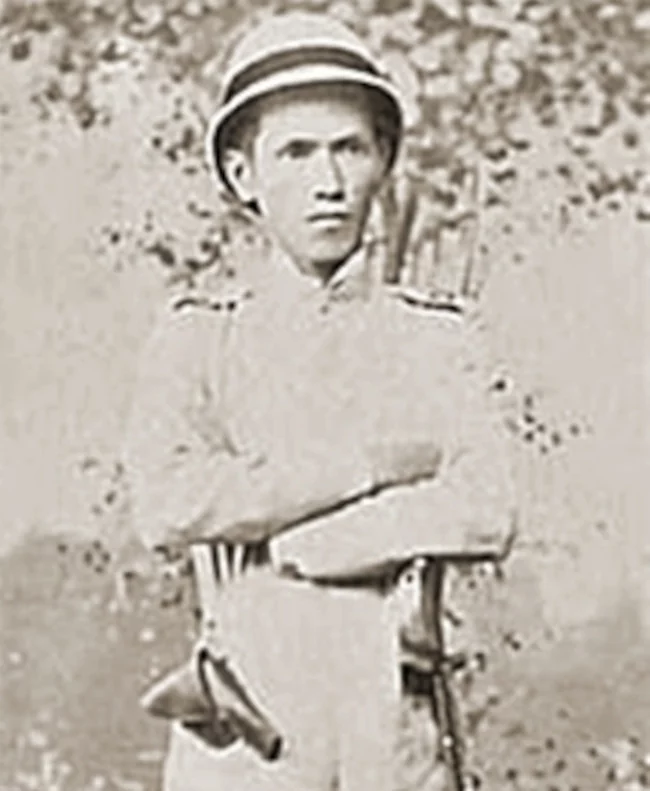
As a child, his parents had him study for two years in the school of Pascual Rodriguez, and for four months under Ramon Renaldo, until he was forced to stop to work in the family farm. Typical of other Filipinos at the time, del Pilar knew little or no Spanish, but was fluent in Tagalog.
Pio married his childhood friend, Juliana Valeriano, at the age of 17, the same year he was forcibly conscripted into the Spanish army. He was assigned in Mindanao for a year but was cut to four months by the intervention of a family friend. To avoid further grief from the Spaniards, his father changed the family name to del Pilar, an unwise choice since that name would soon sow trouble from the famous dissident Marcelo H. del Pilar and General Gregorio del Pilar.
In 1890, del Pilar was appointed cabeza de barangay and later on, became teniente del barrio in Makati. During this time, he had a chance meeting with Jose Rizal, and was inspired to distribute copies of his novel, Noli Me Tangere.
In May 1896, he joined the Katipunan and formed a chapter called Matagumpay, taking the symbolic name Pang-una. His chapter also adopted a flag, a white triangle with a K at each corner, at the hoist of a red field, in the center of which was a mountain with a rising sun on it. This flag was known as the Bandila ng Matagumpay (Flag of the Triumphant) and was del Pilar's personal standard during the revolution.
At the outbreak of the Philippine Revolution, del Pilar was arrested by Spanish authorities for suspected membership in the Katipunan. Although tortured, he did not reveal any secrets about the Katipunan until he was released.
Del Pilar participated in his first battle in Mandaluyong on August 29, 1896. He also led a group of rebels in the Battle of Binakayan on November 9, 1896, capturing the town from Spanish authorities.
On February 16, 1897, bearing the rank of colonel, del Pilar defended Bacoor and Las Piñas. Subsequently, he was promoted to brigadier-general.
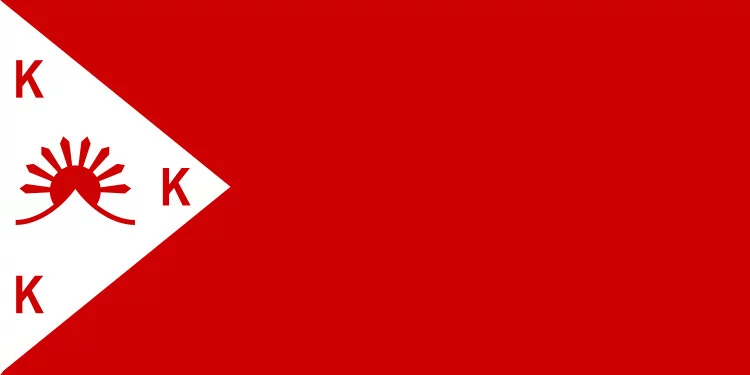
Del Pilar was present in the Tejeros Convention on March 22, 1897, which marked the split between the Magdiwang and Magdalo factions of the Katipunan. Because of the events of the Convention, he aligned himself with Bonifacio, eventually signing the Naic Military Agreement declaring the results of the convention to be null and void. In time, however, he switched sides, aligning himself with the Magdalo faction and becoming one of Emilio Aguinaldo's trusted generals. It was del Pilar along with General Mariano Noriel, that advised Aguinaldo to change the commutation (banishment) to execution of Andres and Procopio Bonifacio.
In September 1898, the Philippine Republic moved its headquarters to Malolos, inaugurated its congress and republican government under a Constitution. It also made General Pio del Pilar a member, the only former farmboy among the ilustrados, scientists, scholars, land-owners. He was the only representative of the emerging "masa."
After February 4, 1899 when the first battle of the Filipino-American War broke out, Pio and his men were considered by the Americans as "the most arrogant and the most hated." Pio was everywhere; skirmishes flared at Manila, at Bulacan, Morong, Antipolo, Malapad na Bato (Fort Bonifacio City) at Guadalupe in Makati, Pasig, Pateros, Cainta, and Bulacan.
His last battle with the Americans was in the town of Morong. He fought bravely but he and his men were defeated and captured.
Del Pilar was exiled to Guam along with Apolinario Mabini, Artemio Ricarte, and other Filipino patriots.
He returned to the Philippines after Governor William Howard Taft extended pardons to the revolutionaries.
He continued to fight for the cause of the Filipino people by supporting the Jones Bill for Filipinos' preparation for self governance.
He died on June 21, 1931 due to lingering illness.
Source:
- Pio del Pilar, Wikipedia
- Makati's hero, Arts and Culture, Carmen Guerrero Nakpil, Philstar Global, November 9, 2009
On This Day - July 10, 1934 - the Filipino voters elected delegates to a constitutional convention
Today in Philippine History, July 10, 1934, the Filipino voters elected delegates to a constitutional convention
On July 10, 1934, the Filipino voters elected 202 delegates to a constitutional convention which drafted the Philippine Constitution of 1935.
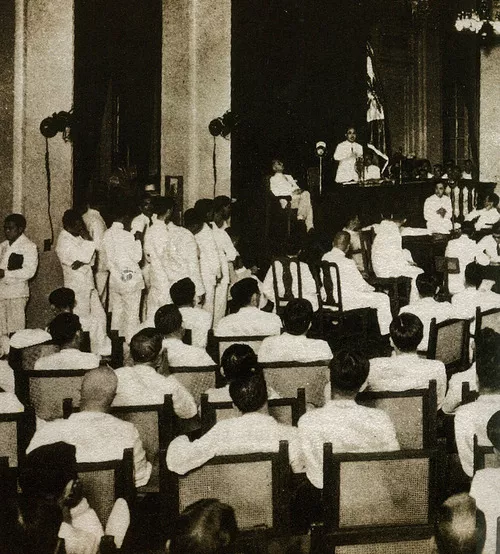
Headed by Claro M. Recto, the Constitutional Convention of 1934 was responsible for framing the 1935 Commonwealth Constitution which was approved by the United States on March 23, 1935.
The so-called "Seven Wise Men" -- Filemon Sotto, chairman, and Norberto Romualdez, Manuel Roxas, Vicente Singson Encarnacion, Manuel C. Briones, Miguel Cuaderno, and Conrado Benitez (who replaced Jose P. Laurel) -- prepared the draft of the Constitution.
The 1935 Constitution provided for unicameral National Assembly and the President was elected to a six-year term without re-election.
The Constitution was amended in 1940 to have a bicameral Congress composed of a Senate and House of Representatives, as well the creation of an independent electoral commission. The amendment also granted the President a four-year term with a maximum of two consecutive terms in office.
Reference:
Philippine News Agency archives
Recent Posts (All Categories)
Connect with Us
On This Day - July 9, 1985 - Arturo Pineda Alcaraz, father of geothermal energy won the IBM Science and Technology Award
Today in Philippine History, July 9, 1985, Arturo Alcaraz won the IBM Science and Technology Award
On July 9, 1985, Arturo Pineda Alcaraz, a volcanologist and acknowledged “father of geothermal energy” won the IBM Science and Technology Award.
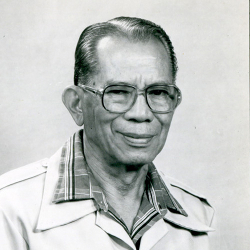
Alcaraz, who earned his Masters of Science degree in Geology at the University of Wisconsin in the United States as a government scholar, pioneered in generating electricity by means of geothermal steam among areas proximate to volcanoes.
With a vast and extensive knowledge on volcanoes in the Philippines, Alcaraz explored the possibility of harnessing geothermal steam to produce energy. He succeeded in 1967 when the country's first geothermal plant produced much needed electricity, ushering the era of geothermal-based energy to power up homes and industries.
In 1951 when the Commission on Volcanology was officially created under the National Research Council, Alcaraz was appointed Chief Volcanologist, a post he held until 1974.
Along with his colleagues, he was able to set up a working model in Tiwi, Albay. He was also able to prove that energy can be generated by geothermal energy.
A steam from a one inch hole drilled 400 feet to the ground powered a turbo generator which lighted up a light bulb. It was a milestone in the Philippines' quest for energy self-sufficiency. Thus, Alcaraz carved his name in the global field of Geothermal Energy and Mining.
Alcaraz was the 1982 Ramon Magsaysay Award recipient for government service for his scientific insight and selfless perseverance in guiding Filipinos to understand and use one of their greatest natural resources.
Reference:
Philippine News Agency archives
The Ramon Magsaysay Award Foundation
On This Day - July 8, 1929 - Dwight F. Davis became the 9th American Governor-General of the Philippines
Today in Philippine history, July 8, 1929, Dwight F. Davis became the 9th American Governor-General of the Philippines
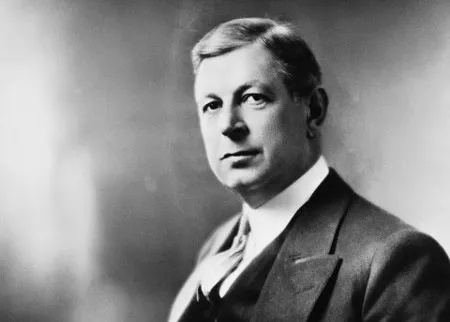
On July 8, 1929, Dwight Filley Davis arrived in Manila to assume the post of Governor-General of the Philippines. He was appointed by U.S. President Herbert Hoover to succeed Henry L. Stimson. He was accompanied by his daughter, Alice, in the place of her mother who was unable to accompany him for reasons of health.
In his inaugural address, on the day of his arrival, Davis stated that "close, cordial, and constructive cooperation under the Jones Law" will be the keynote of his administration. He stated that "towards the Philippine people, the people of the United States have but one desire - to extend to them their friendly aid in the solution of the problems of the future."
His appointment has on the whole been well received both in the Philippines and in the United States, although there was an understandable regret in many quarters that the appointment did not go to Acting Governor-General Eugene A. Gilmore, whose long, faithful, and able service in the Philippines fairly entitled him to the position.
Davis conducted one of the most extensive reconstructions of Malacañang Palace, essentially transforming it from a wooden Spanish-era colonial house, to a 1930s era large concrete mansion.
He resigned on January 9, 1932 for personal and family reasons.
In connection with the Davis' resignation, U.S. President Hoover stated:
"Governor General Davis accepted the appointment to the Philippine Islands at great personal sacrifice. His resignation is based upon personal and family reasons, the force of which must, I feel, receive every consideration, particularly in view of the very generous sacrifices which he has already made in consenting to remain in the Philippine Islands much longer than his personal interests warranted. I have accepted his resignation with the greatest reluctance. His administration of the affairs of the Philippine Islands has been eminently able and successful and constitutes a fitting continuation of the distinguished service he previously rendered as Secretary of War. The 2 years during which he served in the Philippine Islands have been marked by exceptionally cordial and satisfactory relations between the American chief executive and the legislative and other local authorities. Governor General Davis relinquishes office with the deep regret of all concerned, and with a further claim upon the gratitude and affection of both the American and Filipino people."
Davis was born in St. Louis, Missouri on July 5, 1879, a Baptist, married with four children, Harvard graduate, lawyer, athlete, decorated for heroism during World War I, and Secretary of War in the Coolidge Cabinet.
He is best remembered as the founder of the Davis Cup international tennis competition.
He died in Washington, D.C. on November 28, 1945, and was buried in the Arlington National Cemetery.
Sources:
- Philippine Magazine, Volume 26, Number 1, August 1929
- Herbert Hoover - Statements on the Governor Generalship of the Philippines, (http://goo.gl/qczqXp)
- Presidential Museum and Library of the Philippines
- Photo credit: Getty Images
On This Day - July 7, 1892 - The Katipunan was founded when Dr. Jose Rizal was deported to Dapitan
On This Day - July 7, 1892, the deportation of Dr. Jose Rizal to Dapitan was made public; the Katipunan was founded
On July 7, 1892, Governor-General Eulogio Despujol made public the order of the deportation of Dr. Jose Rizal to Dapitan, through a decree published in the Gaceta, to the remote town in Zamboanga.
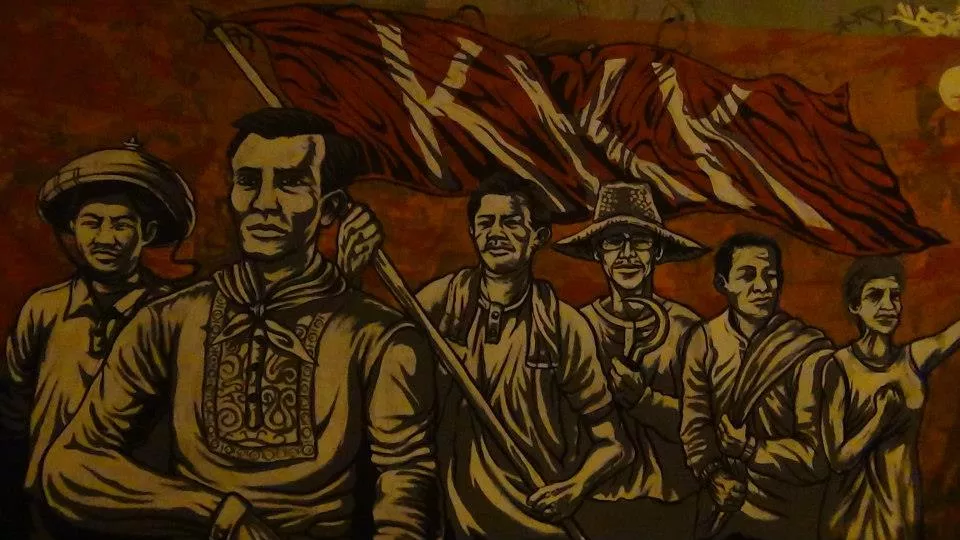
Rizal lived in exile in far-away Dapitan from 1892 to 1896. Under the missionary jurisdiction of the Jesuits, he practiced medicine, pursued scientific studies, continued his artistic and literary works, widened his knowledge of languages, established a school for boys, promoted community development projects, invented a wooden machine for making bricks, and engaged in farming and commerce.
Meanwhile, on this day, in Tondo, Manila, a group of Filipino patriots, led by Andres Bonifacio, Teodoro Plata, Ladislao Diwa, and Deodato Arellano, among others, formally founded the Katipunan (Kataas-taasang, Kagalang-galangang Katipunan ng mgá Anak ng Bayan), an anti-Spanish society with the goal of gaining Philippine independence.
The Katipunan, initially a secret organzation, had three principal aims: political, moral and civic. The political aim was to fight for the independence of the Philippines from Spain. The moral aim was to teach Filipinos right conduct, cleanliness, and to fight against blind obedience to religion and to overcome weakness of character. The civic aim was to help one's self and to defend the poor and the oppressed.
During the next four years, the organization recruited members from various parts of Manila and nearby provinces. Its discovery in August 1896 eventually led to the outbreak of the Philippine Revolution.
Reference:
Andres Bonifacio by Epifanio delos Santos, The Philippine Review, January/February 1918, Volume 1, Number 1/2
Philippine News Agency archives
On This Day - July 6, 1765, Jose Raon, military officer of high rank, arrived in Manila to assume the position of Governor-General
Today in Philippine history, July 6, 1765, Jose Raon arrived in Manila to become Governor General
On July 6, 1765, Jose Raon (Jose Antonio Raon y Gutierrez) a native of Navarra, military officer of high rank, arrived in Manila to assume the position of Governor-General. He relieved Francisco Javier de la Torre.
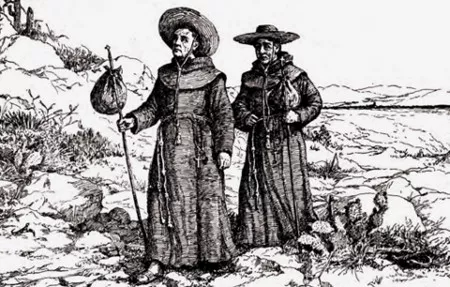
He is remembered as very able but unscrupulous.
He is most conspicuous for his revision of the "Ordinances of Good Government" drawn up by one of his predecessors Pedro Manuel de Arandia, the revision being dated February 26, 1768; and the expulsion of the Jesuits from the islands (1768), in pursuance of the orders received from Madrid dated March 1, 1767. In 1769 he decreed the expulsion of the Chinese from Filipinas, although this was not fully enforced.
Early in October, 1766, French astronomer Le Gentil, whose Voyage was valuable contribution to science and to the history of Filipinas at that time, arrived at Manila, commissioned by the French government to make observations on the approaching transit of Venus. Le Gentil noted (in Le Gentil, Voyage, II) that, Raon was one of the most shrewd of the governors of Manila in enriching himself without causing any one to complain. Raon even displayed to him (Le Gentil) the magnificent "presents" which he had received from the officers of a French ship which came to Manila in evasion of the standing prohibition of foreign trade there.
Raon was condemned for having revealed to the Jesuits, beforehand, in exchange for a large sum of money, the news that their expulsion had been decreed, and for other acts of disobedience to the royal commands regarding that expulsion.
The faithlessness of Raon eventually reached the Royal court which sent Don Simon de Anda (second term) to relieve him and ordered Anda to immediately commence legal proceedings against Raon. Many charges were brought against him and three others; these were Francisco Henriquez de Villacorta and Domingo Blas de Basaraz, members of the Audiencia, and Juan Antonio Cosio, the governor's secretary.
In most of these charges, Raon tried to make excuses for his conduct, or to throw the blame on Galvan or Villacorta; but Anda declares that they were all partly or wholly proved, and that Raon neglected everything in his official position. His secretary Cosio, was especially denounced for having drawn up and attested the false declaration that Raon had obeyed his instructions and performed his duty faithfully in the expulsion of the Jesuits.
Raon was found guilty on the charge of having given information to the Jesuits of the measures to be taken against them.
Cosio was banished to Africa. Raon died in Manila.
Raon street in Quiapo, Manila was named after him.
Sources:
- The Philippine Islands, 1493-1803; explorations by early navigators, descriptions of the islands and their peoples, their history and records of the Catholic missions, as related in contemporaneous books and manuscripts, showing the political, economic, commericial and religious conditions of those islands from their earliest relations with European nations to the beginning of the nineteenth century; (Volume 50, 1764-1800), Emma Helen Blair, et., al.
On This Day - July 5, 1992 - President Ramos opened two Malacañang extension offices
Today in Philippine History, July 5, 1992, President Ramos opened two Malacañang extension offices
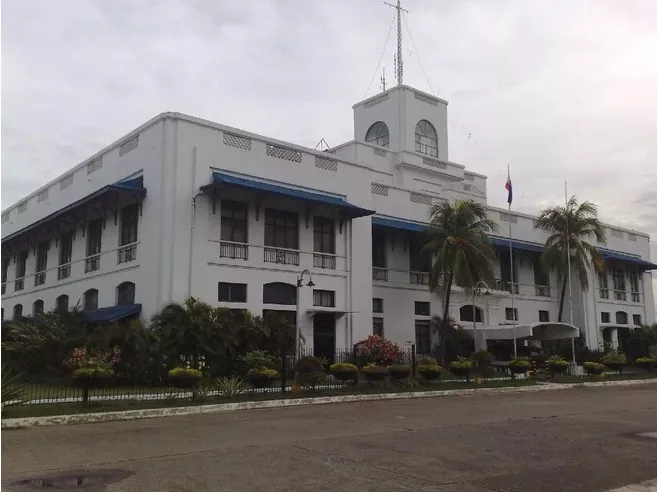
On July 5, 1992, President Fidel Ramos opened two Malacañang extension offices, one in Cebu and the other in Davao, as part of his campaign promise to make the seat of power accessible in the Visayas and Mindanao.
Malacañang Palace is the official residence of the President of the Philippines. It also houses some national government offices such as the Malacañang Museum and the Presidential Museum.
The palace is an 18th century villa along the Pasig River located in the center of Manila. Originally a summer house built by Spanish aristocrat Don Luis Rocha, the structure was sold to Colonel Jose Miguel Formente, and was later purchased by the state in 1825. It has been renovated and expanded through the decades.
In 1937, it became the official residence of the Philippine President. Commonwealth President Manuel L. Quezon was the first Filipino chief executive to live in Malacañang Palace.
The late President Ferdinand E. Marcos and former First Lady Imelda R. Marcos were the longest residents of Malacanang from 1965 to 1986.
Across the Pasig River is Malacañang Park, which contains a golf course, park, billets for the presidential guards, as well as a Commonwealth-era presidential rest house, called Bahay Pangarap, and a recreation hall.
The Malacanang in the Visayas is located in Cebu City. It is a building originally built in 1910 which previously housed the Bureau of Customs office in the Port of Cebu City. The building was restored in 2004 during the administration of Gloria Arroyo.
Reference:
Philippines News Agency
